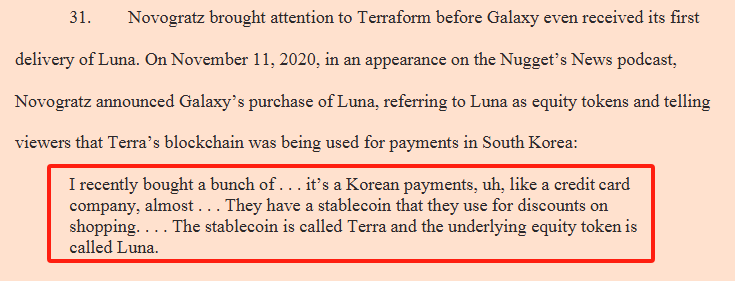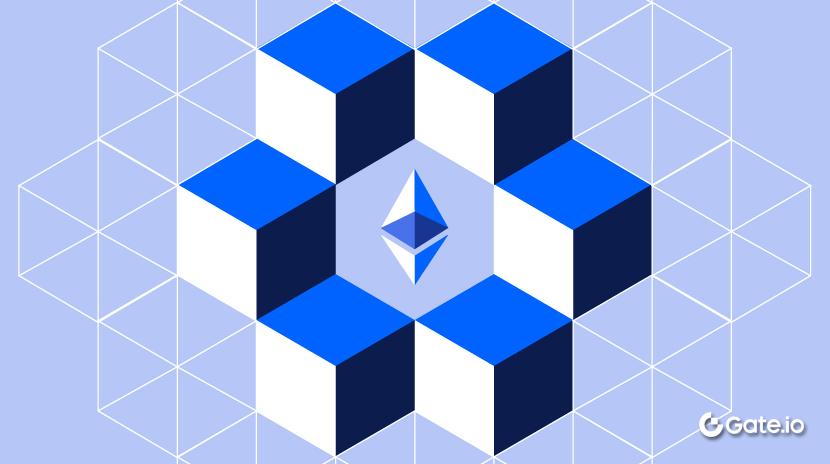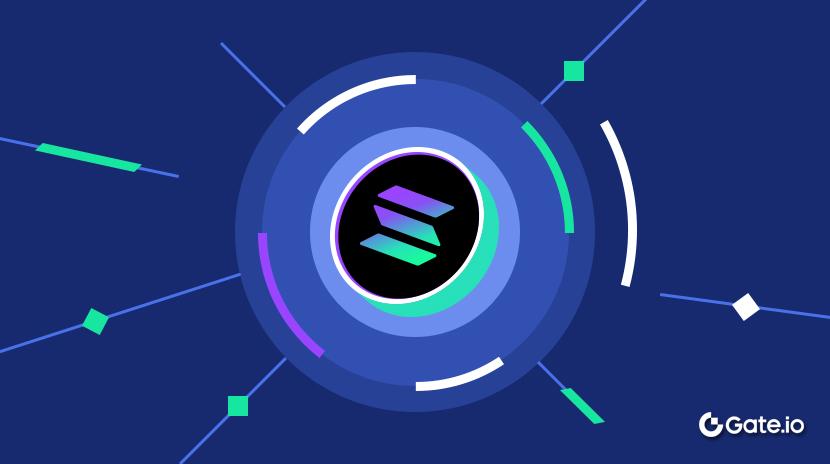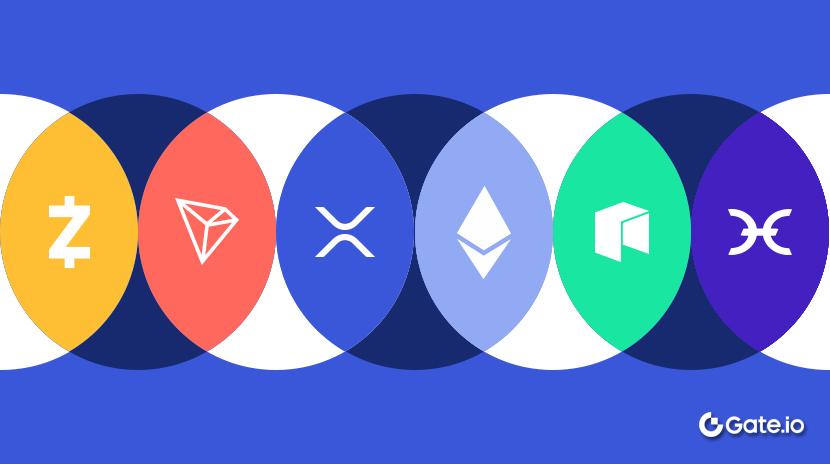От "Евангелиста" до "Извлекателя": Искусство Pump-and-Dump от Galaxy
В мире криптовалюты грань между "евангелистом" и "экстрактором" часто бывает настолько тонкой, что почти невидимой.
Эта линия называется доверие.
Сегодняшний евангелист в фокусе - Майк Новогратц, бывший партнер Goldman Sachs, советник Нью-Йоркской федеральной резервной системы, а теперь основатель и генеральный директор Galaxy Digital. Обладая беспрецедентной страстью и непоколебимой убежденностью, он пропагандирует видение криптовалюты миру различными способами, став голосом, слишком громким, чтобы его можно было игнорировать в отрасли.

Galaxy Digital, признанный "самым криптовалютным учреждением на Уолл-стрит", управляет миллиардами активов и имеет престижную репутацию в криптоиндустрии. Бесчисленные инвесторы, доверяющие Майку Новогратцу и Galaxy, вложили свои средства на рынок, мечтая о том, чтобы воспользоваться моментом и стать одним из счастливых немногих.
Но иногда доверие становится смертельной ловушкой.
Этот рассказ был изначально запланирован к публикации на прошлой неделе, но внезапное обострение торговой войны между США и Китаем заставило нас изменить планыохватить распутывание гегемонии доллара и восхождение децентрализованных стейблкоиновВместо того. В то время как эти крупные повествования влияют на глобальный порядок, история сегодня может быть ближе к сердцу обычного инвестора.
Если вы потеряли все в крахе Луны, не будьте слишком строги с собой. Это не потому, что у вас не было суждения. Даже не потому, что Луна была обречена с самого начала. Это потому, что вы не имели представления о том, что сам человек, убеждающий вас "удерживать веру", уже тихо избавился от своих сумок, пока вы покупали на вершине.
Еще более тревожным является то, что такой вид добычи никогда не прекращается - он просто принимает новых актеров и новые этапы. Позади почти каждой волны "веры, питающей эйфорию", стоит бесчисленное количество розничных инвесторов, не подозревающих, что платят за тщательно отсчитанные выходы из игры избранных немногих.
Вы можете почувствовать гнев. Вы можете хотеть справедливости. Но вот жесткая реальность: если вы не можете четко доказать, что эти КОЛы (ключевые мнения лидеров) или учреждения действовали с мошенническим намерением, ваши потери почти невозможно восстановить.
Правовой порог для мошенничества очень высок. Вам нужны убедительные доказательства того, что они знали, что проект имел огромные риски или вводящую в заблуждение информацию, и что они умышленно ввели вас в заблуждение, чтобы войти на рынок и сорвать куш на пике.
Но реальная жизнь более запутана, чем юридическая теория. KOL-ы искусны - они избегают пересечения юридических границ. Их язык всегда неопределенный: "бычий", "огромный потенциал", "просто личное мнение, не финансовый совет". Пока их слова остаются двусмысленными, а их уходы незаметными, доказать вину становится почти невозможной миссией.
Это самое толстое покрывало из фигового листа, покрывающее извлечение в стиле KOL - сложность доказательства намерений, отсутствие конкретных доказательств злобы.
Но вам может прийтись задаться вопросом: если его так трудно обнаружить, как глава компании Galaxy Майк Новограц в конечном итоге был выставлен наружу?
Это приводит нас к ключевой фигуре - генеральному прокурору штата Нью-Йорк и уникальному законодательному акту: Закону Мартина. Именно из-за этого закона, или точнее, определенного пункта в нем, генеральный прокурор Нью-Йорка может начинать расследования, не нуждаясь в доказательстве явного мошеннического умысла, раскрывая сложные схемы, скрытые за так называемой "верой". Galaxy была первой, кто попался, но определенно не будет последней.
Ранее мы подробно рассмотрели Закон Мартина. Этот же закон однажды заставил Организацию Трампа заплатить штраф в размере $450 миллионов, а теперь его меч направлен на мир криптовалют.Русская версия.

После прочтения 44-страничный документ, опубликованный офисом генерального прокурора Нью-Йорка, Я не мог не чувствовать: без ограничений, известных как «самый агрессивный закон о ценных бумагах в США», этих глубоких расследований бы не произошло. И мы, возможно, никогда бы не узнали, что за $40 миллиардов долларов, которые утратила Луна, стоит такая точная, рассчитанная институциональная стратегия выхода.
Я надеюсь, что сегодняшняя статья не просто драматический финансовый рассказ для вас, а предупреждение - одно из тех, которое напоминает вам держать безопасное расстояние как от KOLs, так и от институтов.
Теперь давайте сначала разберемся: как Галактика и LUNA стали переплетаться?

1. Как Гэлакси впервые связалась с Луной?
Прежде чем погружаться в эту историю о выходе с высокими ставками, нам сначала нужно понять одного из основных персонажей - кто такой, собственно, Галактика?
1.1 Кто такой Галактика?
Galaxy Digital, официально известный как Galaxy Digital Holdings Ltd., зарегистрирован в Каймановых островах с центральным офисом в Нью-Йорке. Основан бывшим ветераном Уолл-стрит: Майком Новограцом.
Кто он? Бывший партнер Goldman Sachs, член Инвестиционного комитета Нью-Йоркской ФРС и один из первых институциональных сторонников криптовалюты — он начал инвестировать в биткоин еще в 2013 году. Если вы когда-либо читали о «будущем биткоина» на CNBC, Bloomberg или Financial Times, вероятно, вы сталкивались с его именем.

В 2018 году Новограц основал компанию Galaxy, которая впоследствии управляла более чем $5 миллиардами активов и работала через 123 дочерние компании по всему миру. Ее бизнес охватывает рыночное обеспечение, венчурный капитал, торговлю, доверительное управление, исследования, практически делая ее «Морган Стэнли криптовалют».
Другими словами, если криптовалютной индустрии нужен представитель, который больше всего напоминал бы Уолл-стрит, это безусловно был бы Galaxy. И ясно, что Galaxy был идеальным партнером для Luna - здесь нет конкуренции.
1.2 Что такое Luna?
Теперь обратимся к другому главному персонажу этой истории: Луна.
Luna была криптовалютой, запущенной в 2018 году Terraform Labs, компанией, основанной южнокорейским предпринимателем До Квоном и зарегистрированной в Сингапуре. Основная идея Луны заключалась в построении двойной системы токенов, объединяющей алгоритмический стейблкоин с основным токеном.
Экосистема состояла из:
- Блокчейн Terra: базовый реестр, где происходят транзакции
- Luna: нативный токен платформы, используемый для управления, стейкинга и регулирования спроса и предложения стейблкоинов
TerraUSD (UST) и TerraKRW: так называемые «стейблкоины», утверждаются быть привязанными к доллару США и вону соответственно - CHAI: корейское платежное приложение, используемое для продвижения "реальных случаев использования"

Звучит впечатляюще, не правда ли? Но проблема заключалась в том, что его «механизм стабильности» полностью зависел от поведения рынка. Как только UST потеряет свою привязку, Луна попадет в «смертельную спираль». UST по своей сути был алгоритмическим стейблкоином, и на сегодняшний день ни одна такая модель не увенчалась успехом. (Мы углубились в стейблкоины в нашей последней статье, «Тарифы - это клинок, валюта - щит—не стесняйтесь проверить это.)
Одна вещь, на которую следует обратить внимание, - это упомянутая выше платежная система CHAI. Она была в некотором роде аналогична китайской Alipay или американской PayPal. До Квон был соучредителем CHAI. Это реальное соединение стало критическим моментом для Galaxy, чтобы раздуть интерес к Luna.
Для ясности: Луна была примером инновационной финансовой инженерии с потенциальной перспективой, но с еще большим риском неудачи. Тем не менее, До Квон считал, что история достаточно убедительна. Теперь ему нужен был "западный представитель", чтобы помочь продать эту концепцию на американском рынке.
1.3 Как это началось: Сделка на западного представителя
Перемотка до 2020 года. До Квон понял, что для того, чтобы Луна стала вирусной, корейские трейдеры и белая книга не справятся. Ему нужна была реклама на западных рынках - ему нужен был авторитетный бренд для его одобрения. Именно тогда они обратились к Galaxy.
В августе 2020 года Terraform предложил Galaxy: они хотели, чтобы Galaxy выступил в их защиту. Если генеральный директор Galaxy публично продвигал Луну, Terraform предоставил бы им более благоприятные инвестиционные условия.

Galaxy обсудила внутренние вопросы немедленно. Они уже заметили технологию Terraform и признали огромные капиталовложения в проект. 27 октября 2020 года две стороны завершили сделку, как показано ниже:

- Galaxy инвестировала $4 миллиона
Купил 18.51 миллиона Luna по сниженной цене $0.22 за монету - Монеты разблокированы ежемесячно, 1/12 в месяц, и могут быть проданы в любое время
Примечание: В то время рыночная цена составляла 0,31 доллара, что означает, что Galaxy получила скидку 30% и не была вынуждена находиться в блокировке. Это не была "хорошая сделка, падающая с небес"; это была сделка, обеспеченная поддержкой, продвижением и поддержкой.
Скрытое правило заключается в следующем: пока вы готовы "сказать хорошие вещи", мы позволим вам "быстро разблокировать". Galaxy воспользовалась этим полностью и даже написала во внутреннем меморандуме, что Terraform не получила признания на американском рынке, и только благодаря их продвижению люди могут поверить в законность ее экономической деятельности, как видно по тексту, помещенному в красной рамке на изображении ниже.

В результате, начиная с ноября 2020 года, Galaxy стала упоминать Луну нарочито в подкастах, твитах и интервью. Цена начала расти, а объем торгов резко увеличился. Этот ритм продолжался целый год.
1.4 Резюме: Борьба за "Деньги"
Связь между Галактикой и Луной не была вызвана "общим видением" или "ведущей технологией", а скорее полным "обменом интересами":
- Terraform предоставил скидки и привилегии разблокировки;
- Galaxy обеспечил трафик, доверие и упаковку.
- Обе стороны достигли неявного согласия: вы создаете настройку, а я ее продвигаю, не говоря ни слова вслух.
Из результатов видно, что это "сотрудничество" было очень успешным:
- Цена Луны выросла с $0.31 до пика в $119;
- Galaxy заработала сотни миллионов прибыли;
- Розничные инвесторы вошли на пике и вскоре попали в "смертельную спираль".
По сути, это была типичная "структурированная стратегия выхода." Однако она не нарушала традиционные законы о ценных бумагах, поэтому многие KOL защищали Galaxy. Но согласно Закону Мартина, это безусловно мошенничество. Когда ваши действия и слова противоречат друг другу, поднимая цену, а затем выводя деньги, это манипулирование рынком, что является незаконным.
Вот почему Galaxy была готова заплатить $200 миллионов в рамках урегулирования в обмен на "гарантию" прекратить расследование генерального прокурора Нью-Йорка, как показано на изображении ниже.

Для анализа тактики насоса и сброса Галактики я внимательно изучил этот 44-страничный документ, и пошагово разберу его для вас.
2. Как произошел откачка и сброс Галактики?
Далее мы раскроем, как Galaxy одновременно кричала "вера", стратегически продавая свои активы - "искусство разгрузки". Прежде чем погрузиться в эту мрачную историю, я должен честно признать Galaxy и Майка Новогратца, чтобы предотвратить ваше мнение о том, что Новограц - просто "бесстыжий человек".
Вы может быть не знаете об этом, но еще в 2013 году, когда Уолл-стрит коллективно насмехалась над Биткоином, Новограц уже инвестировал в него реальные деньги. Он не только открыто покупал Биткоин, но и публично выражал свой оптимизм по отношению к криптовалютным активам и поддерживал эту "финансовую революцию" в основных финансовых СМИ. Более того, он предсказал значительный рост цены Биткоина в 2013 году и, в 2014 году, провел краудфандинг Эфириума, который находился еще на начальных этапах. Он однажды заявил, что 20% его чистой стоимости инвестировано в Биткоин и Эфириум, что в то время вызвало шок в консервативном и осторожном Уолл-стрит сообществе.

К 2024 году Galaxy публично инвестировала в 72 проекта, включая ведущие криптопроекты, такие как Polygon, Bitfarms и Celestia, общий объем инвестиций достигает миллиардов долларов. Хотя Circle (эмитент USDC) и Bitwise (эмитент крипто-ETF) не раскрывали прямо инвестиционные записи Galaxy, активное участие Galaxy в экосистемных партнерствах и консалтинговых услугах все равно значительно способствовало общему развитию криптоиндустрии.
Другими словами, тот факт, что вы можете покупать криптовалюту на Coinbase, переводить с использованием стабильных монет USDC и видеть сегодня утвержденные ETF Ethereum, в значительной степени обусловлен вкладом Galaxy в ранние неопределенные фазы рынка. Galaxy не является так называемым «внешним капиталоотводчиком»; скорее, это подлинный «старый игрок», который давно является частью роста отрасли.
Именно поэтому сегодняшнее раскрытие инцидента "насос-и-сброс", о котором мы говорим, настолько печально. Имея рыночную репутацию и ресурсные преимущества, которые Галактика накопила за годы, они могли бы выбрать более прозрачный и законный способ получения прибыли, вместо того чтобы попасть в дурную "серую зону насоса и сброса".
К сожалению, Galaxy в конечном итоге не смогли устоять перед искушением. Они попали в ловушку, которую сами разработали, и выбрали эту изощренную, но неправильную стратегию получения прибыли — накачивание и сброс.
Далее я подробно разберу, как Galaxy пошагово манипулировала рыночным настроением, используя искусные методы для осуществления своей схемы накачки и сброса.
2.1 Небольшой тест: Первая попытка "насоса и сброса"
История начинается в конце 2020 года.
Подписанное соглашение Galaxy позволило им разблокировать 1/12 своих Luna холдингов каждый месяц. Как ветеран Уолл-стрит, Новогратц знал, что самым эффективным способом быстрого получения прибыли было «разгонять цену при продаже».
11 ноября 2020 года, даже до того, как Galaxy получил свою первую партию Luna, Новограц не мог дождаться, чтобы начать продвигать Luna. Во время выступления в популярном подкасте Nugget’s News он рассказал слушателям, что недавно купил много Luna. Он описал ее как корейскую платежную компанию, похожую на компанию по выпуску кредитных карт, где пользователи могли получать скидки. Как показано на изображении ниже. На самом деле это было абсолютной ложью — у Luna в то время не было никакого практического применения.

Через несколько дней, 14 ноября, пользователь Twitter спросил: "Привет, порекомендуйте некоторые монеты". Новогратц сразу ответил: $luna. Как показано на изображении ниже.

В декабре Новогратц твитнул, что у корейского платежного приложения Chai уже есть 80 000 активных пользователей ежедневно, а $LUNA имеет большой потенциал! В результате, в тот же день суточный объем торгов Луной вырос с $27,5 миллиона до $69 миллионов, моментально разожгнув интерес рынка.

В этот же день Galaxy получил первую партию разблокированных токенов Luna: более 1,54 миллиона токенов. Этот "достойный" ветеран Уолл-стрит сказал своей внутренней команде: "Пока не продавайте; мое правило - не сбрасывать до 3 дней после позитивного твита".
Через две недели, 16 и 17 декабря, Galaxy продала всю Luna по цене от $0.50 до $0.52, идеально закрыв свой первый раунд "насос и сброс".
Что касается «не продавать в течение 3 дней после позитивного твита», это звучит как тщательно продуманное правило, верно? Однако даже это само наложенное правило не было строго соблюдено. Перед подавляющим манящим влиянием денег все казалось хрупким.
2.2 Борьба за окупаемость: случайный подъем Блумберга
Galaxy clearly became addicted to “pump and dump.” But to quickly realize profits, they needed a bigger stage. This time, they turned to mainstream financial media—Bloomberg.
В январе 2021 года Galaxy проактивно обратилась к Bloomberg, предоставив пресс-релиз с ложными данными, утверждая:

Terra теперь имеет третий по числу транзакций среди всех блокчейнов (после BTC и Ethereum) и генерирует 13 млн долларов США в год. Terra KRW сегодня поддерживает CHAI, один из крупнейших электронных кошельков в Корее, который имеет более 2 миллионов пользователей и генерирует 1,2 миллиарда долларов ежегодного объема транзакций.
Дело в том, что транзакции CHAI на самом деле вообще не используют блокчейн Terra; все платежи все еще осуществляются в корейских вонах, что не имеет ничего общего с Luna или TerraKRW. Почему же Galaxy и Terra почувствовали необходимость выдумать это, использовать CHAI в качестве реквизита? Потому что без CHAI в качестве поддержки вся история была бы лишена воображения.
26 января 2021 года Bloomberg опубликовал крупный отчет под названием “Новограц инвестирует в криптостартап, обслуживающий миллионы в Корее,и цена Luna мгновенно выросла с $0.89 до $1.23.

CoinTelegraph сообщил с заголовком " LUNA удваивается в цене после инвестиций на $25 миллионов от Galaxy Digitalкоторый вызвал рыночное безумие и всплеск покупок.

Всего через несколько дней после отчета Bloomberg, Galaxy снова отправился в плавание. 30 января 2021 года они продали более 1,54 миллиона Luna по цене до $1,47 за монету. К тому времени Galaxy уже окупил свои первоначальные $4 миллиона инвестиции.
Эта битва была выведена чисто и решительно, поистине воплощая в себе "искусство дампинга".
2.3 Эскалация: Комбинация татуировок и ложных данных
Получив обратно свои инвестиции, Galaxy стала еще более бесшабашной. Они начали играть своими тузами.
В марте 2021 года Новогратц твитнул: «Если Луна достигнет отметки в $100, я сделаю татуировку Луны!» Это личное обязательство, поражающее в самое сердце, быстро вызвало бурю в сообществе.

В то же время Новограц продолжал сбивать отношения между Чай и Террой, заставляя людей постоянно верить, что блокчейн Терра имеет сильные практические применения в реальном мире. Например:
- 26 апреля 2021 года Новограц заявил в подкасте, что 6% платежей в Южной Корее совершаются с использованием Chai.
- 21 мая он еще больше преувеличил, заявив, что 7%-8% платежей в Южной Корее осуществляются через базирующийся на блокчейне Chai.
- 22 июня он снова заявил, что 8% платежей в Южной Корее проходят исключительно через Chai.
- 13 сентября, во время своего выступления на Barclays Global Financial Summit, он заявил, что 9% платежей теперь выполняются через блокчейн Luna.
Однако Чай фактически составлял менее 1% от общего объема транзакций в Южной Корее, и Чай вообще не поддерживался блокчейном Terra, не имея никакого отношения к Луне. Эти цифры были абсолютно ложными, но эффект был мгновенным. После каждого заявления цена Луны выросла, и Галактика не стала колебаться, чтобы продать свои активы:
- В начале мая 2021 года они продали 1,3 миллиона Луны по цене до $18,60 за монету;
- 4 июня они продали почти 1,79 миллиона Luna по цене около $6,91 за монету;
- В начале августа они продали еще 1,61 миллиона Luna по цене от $12,19 до $14,79 за монету.
К вечеру 24 декабря 2021 года, прямо перед Рождеством, Луна действительно поднялась до $100! Новогратц сдержал свое обещание и опубликовал фотографию своего татуировки Луны на своей руке, вызвав безумие в социальных сетях.

Однако Galaxy, которая одновременно делала татуировки и разгружалась, не показывала признаков остановки. В день Рождества они начали продавать Луну по цене $96.96. В начале января 2022 года Galaxy продолжала продавать большие объемы по высокой цене около $90, выводя из оборота десятки миллионов долларов в общей сложности.
Можете ли вы представить? Когда Новограц разместил это изображение своей татуированной руки, трейдеры за кулисами беспрестанно набирали текст на своих клавиатурах, отчаянно сбрасывая Луну на эйфоричный рынок.
2.4 Финальное безумие: Крича "Сохраняй веру", сбрасывая огромные объемы
В начале нового года 2022 года Galaxy и Novogratz начали свою окончательную «лихорадку».
5 января, когда Луна упала с своего пика в $100 до примерно $80 и рыночное настроение начало колебаться, появился Новограц. Он успокоил тревожных инвесторов в Твиттере: После большого всплеска рынка всегда происходит небольшая консолидация. $100 - всего лишь символическое число. Будьте терпеливы, и Луна обязательно поднимется. Верьте в успех!

Эта знаменитая фраза «Держите веру» показалась как укол адреналина, возрождающий надежду у десятков тысяч держателей Луны. Однако в то же время совершенно другая сцена разворачивалась в торговом зале Галактики:
- 5 января Galaxy продала более 160 000 Luna по цене от $77.51 до $84.80, выручив около $13.58 миллиона в тот день;
- Потом, с 6 по 7 января Galaxy вновь продала более 520 000 Luna без колебаний, на сумму почти 40 миллионов долларов;
- С 10 по 13 января, всего за четыре дня, Galaxy выгрузила почти 680 000 Luna, снова выручив более 50 миллионов долларов.

Во время страстного сообщения Новогратца "Сохраняйте веру" всего за одну неделю Galaxy тихо продал более 1,3 миллиона Luna, выручив общую сумму в 104 миллиона долларов! Тем временем они не раскрывали никаких своих действий по продаже публике, продолжая сохранять свою "веру поддерживаемую" персону.
Еще более абсурдная сцена произошла 15 января. Когда Луна упала до уровня примерно $87, Новогратц юмористически ретвитнул изображение "Viejo Lobo" (испанский для "Старый Волк") в Twitter, шутя: Его позиция в сообществе Луна казалась подразумевать, что он видит себя опытным старым волком, спокойно сидящим на рыбацкой платформе.

Однако всего через полтора часа после публикации твита Galaxy быстро продала 13 276 Luna, идеально совпав с кратковременным восстановлением и выручив 1,15 миллиона долларов.
На следующей неделе Galaxy начала почти безудержную распродажу, избавившись от более чем 1,1 миллиона Luna, при постоянном падении цен с $69 до $48.

Тем не менее, Новограц продолжал кричать «Не теряй веру», призывая последователей удерживать позиции, как если бы это была просто «нормальная рыночная коррекция».

2.5 Сводка: После Безумия Остался Беспорядок
Гэлакси и "последний бешенство" Новограца с Луной идеально проиллюстрировали, что означает "институциональное искусство выгрузки".
На первый взгляд, они играли роль верных крипто-евангелистов, вдохновляя криками "вера", даже до того, как татуировали тотем Луны на своих руках.
Однако за кулисами они тщательно планировали и продолжали массово продавать Луну, пока их позиции почти не были пустыми.
Конечной точкой этой игры было неизбежное. 9 мая 2022 года, когда TerraUSD (UST) полностью обвалился, вызвав «смертельную спираль» Луны, его цена упала с $65 до $0.004 всего за три дня, и $40 миллиардов рыночной капитализации исчезли как дым.
К тому времени Galaxy уже вышла из сцены, у них осталось всего 2 060 Лун, стоящих менее 10 долларов.
Теперь пришло время для нас задуматься.
3. Вы можете избежать этого мошенничества?
После того как вы прочитали драматическую историю манипуляций с ценой Galaxy и продажи, у вас может возникнуть насущный вопрос: "Если бы я был умнее, осторожнее, мог ли я избежать этого мошенничества?"
Чтобы ответить на этот вопрос серьезно, мы должны подойти объективно, анализируя тонкие знаки, скрытые за такими мошенничествами, с использованием фактов и данных, и понимая преимущества и слабые стороны, которыми обладают обычные инвесторы. Давайте проанализируем это глубоко с двух точек зрения: «Почему это возможно» и «Почему это невозможно».

3.1 Почему это возможно
Фактически, если вы можете оставаться достаточно бдительными, обладать здравым смыслом и терпением, то совершенно возможно избежать попадания в тщательно организованную "насос-и-вылив" аферу Galaxy.
Сначала признаки преувеличенных данных
Осторожный инвестор легко заметит, что данные, используемые Galaxy и Novogratz в своих продвижениях, содержат серьезные преувеличения, а то и откровенные лжи.
Например, Новогратц неоднократно подчеркивал:
- В апреле 2021 года «6% платежей в Корее уже были совершены через Chai».
- 21 мая это число увеличилось до "7%-8%".
- К концу сентября Новогратц утверждал смело: "9% всех платежей в Корее были проведены с использованием блокчейна Luna".
Но что показывают фактические данные? Согласно официальным данным Chai (которые можно проверить через Chaiscan и другие каналы), объем платежей Chai на корейском рынке платежей никогда не превышал 1%. Более того, Chai никогда фактически не использовал блокчейн Terra для расчетных операций.
Если бы вы уделили мгновение, чтобы проверить данные Chaiscan, вы бы увидели, что эти так называемые "мощные примеры использования" были всего лишь замками в воздухе. Другими словами, просто обратив внимание, вы легко могли бы заметить значительные разногласия в данных и вводящую в заблуждение информацию в продвижении Galaxy.
Во-вторых, явные признаки долгосрочного вывода средств
Еще одним важным ключом для выявления мошенничества является рыночная производительность непосредственно после публичных акций Galaxy.
Возьмем, к примеру, 3 декабря 2020 года. Когда Новограц объявил в Twitter, что у Chai есть 80 000 ежедневных активных пользователей, объем торгов Луны быстро вырос с 27,5 миллионов долларов до 69 миллионов долларов.
Однако всего через две недели Galaxy быстро избавилась от своей первой партии Luna, продавая ее примерно по $0.50, быстро выводя деньги.
Точно так же 30 января 2021 года, всего лишь через несколько дней после того, как Bloomberg сообщил о инвестициях Galaxy в Luna, Galaxy быстро продала 1,54 миллиона Luna. Этот шаблон продаж происходил в самое близкое время к моменту рекламных объявлений, при этом цена была накачана прямо перед тем, как Galaxy вывела деньги.
Эта регулярная схема продаж повторяется каждый месяц. Просто обращая внимание на ончейн-данные или циркулирующее предложение Luna, можно было ясно увидеть признаки того, что «крупные инвесторы регулярно сокращают свои позиции», что предполагает наличие структурированного намерения разгрузиться.

Третье, личные рекомендации сверху
Третий сигнал, который может помочь вам избежать попадания на удочку, - это преувеличенные личные одобрения Новогратца.
Новограц заявил, что если курс Luna достигнет отметки в $100, он сделает татуировку Luna! Хотя такие личные обязательства могут вызвать эмоции, они также преувеличены и очевидны, раскрывая настойчивое желание манипулятора повлиять на рыночное настроение.
Настоящие профессиональные инвесторы или институциональные инвесторы обычно не делают таких четких рыночных обещаний публично. Когда на рынке происходят драматические обязательства или чрезмерно экстремальные продвижения, осторожные инвесторы должны повысить бдительность и избегать слепого следования за хайпом.
3.2 Почему это невозможно
Однако, анализируя это рационально, мы также должны признать, что для подавляющего большинства обычных инвесторов избежать сложного структурированного мошенничества, подобного Galaxy, крайне сложно, и даже можно сказать, почти невозможно.
Во-первых, "Авторитетный эффект" институтов слишком силен
Майк Новограц, генеральный директор Galaxy Digital, является легендарной фигурой на рынке криптовалют. Он был партнером Goldman Sachs, часто появлялся на ведущих финансовых СМИ, таких как CNBC и Bloomberg, и завоевал высокий авторитет и доверие благодаря своим успешным ранним инвестициям в биткоин и эфириум.
Для обычных инвесторов увидеть такого эксперта отрасли, который ранее делал точные рыночные прогнозы, лично одобряет проект, легко поддается сильному психологическому эффекту закрепления. Они быстро опускают бдительность и принимают решения исключительно на основе рекомендации эксперта, отказываясь от самостоятельного мышления.
Galaxy точно использовал этот авторитетный эффект, чтобы успешно манипулировать рыночным настроением. Для большинства инвесторов крайне сложно распознать скрытые мотивы этого авторитета.
Во-вторых, сложные медиа-операции и PR-стратегии
Galaxy сотрудничал с несколькими крупными медиа-изданиями (такими как Bloomberg и CoinTelegraph), чтобы создать кажущийся подлинным и авторитетным рыночный образ для Luna.
26 января 2021 года Bloomberg опубликовал отчет, из которого ясно следует, что Galaxy предоставила ложные данные Bloomberg, завышая силу экосистемы Terra и Luna и реальные приложения, создавая ложное впечатление взрывного роста рынка.
Такая точная манипуляция средствами массовой информации делает очень сложным для обычных инвесторов подозревать что-либо. Ведь когда общественность видит, что основные СМИ утверждают проект, они естественным образом предполагают, что это основано на тщательном расследовании и достоверной информации, и маловероятно, что они задумаются о том, что это тщательно организованная манипуляция общественным мнением.

Третье, «Сохраняй веру» как эмоциональное манипулирование
С психологической точки зрения лозунг Новогратца "Сохраняй веру" является чрезвычайно эффективным способом манипулировать эмоциями инвесторов. Когда рынок падает, наиболее утешительное для обычных инвесторов - услышать, что кто-то поддерживает их в сохранении веры и не сдаваться легко.
Это эмоциональное руководство гораздо более проникающее, чем любой рациональный анализ. Новогратц умело использует это эмоцию, используя убедительный язык, чтобы контролировать рыночное настроение, заставляя инвесторов удерживаться во время спада и даже покупать больше по низким ценам, становясь «последними, кто покупает» или «розничными инвесторами».
На самом деле, когда Galaxy сбрасывала по высоким ценам, обычным инвесторам было почти невозможно оставаться полностью рациональными. Когда все скандируют веру, сомневающиеся рассматриваются как выбросы и сталкиваются с огромным психологическим давлением.
3.3 Сводка: Компромисс между тем, что вы можете и не можете делать
Возвращаясь к исходному вопросу: "Можно ли избежать этого мошенничества?"
Объективно говоря, это зависит от того, как много рыночных знаний, инвестиционного опыта и способности к самостоятельному мышлению вы обладаете.
- Если вы достаточно внимательны, чтобы заметить расхождения между данными и реальностью, выявить аномальные шаблоны продаж после каждой акции и оставаться осторожными по отношению к драматическим маркетинговым тактикам, вы потенциально можете просмотреть мошенничество заранее.
- Но если вы обычный инвестор, ослепленный институциональной властью, введенный в заблуждение медийным манипулированием и подверженный эмоциональным лозунгам, большинство людей, скорее всего, станут жертвами тщательно выверенного сценария Galaxy.
В рынке всегда будут жадность и обман. История Galaxy не первая, и определенно не последняя.

Заключение
Линия доверия между проповедью и уборкой, однажды пересеченная, становится острым лезвием косы. За каждым мошенничеством стоит битва между человеческой жадностью и страхом.
В истории Галактики и Луны мы увидели, как власть стала инструментом для сбора урожая, как СМИ стали громкоговорителем для обмана и как эмоции питали жадность. Но в конечном итоге в этом мире нет свободного богатства, и никто не становится богатым без причины.
"Вера" должна быть одним из самых волнующих слов в инвестиционном мире, но когда ее используют те, у кого есть скрытые мотивы для манипуляции рынком, вера становится ядом, в конечном итоге наводняя каждого слепого последователя.
Однако мы также должны признать, что Galaxy не была просто хищником. Они стояли на передовой, когда криптовалютный рынок был еще в начальной стадии, инвестируя капитал и уверенность в индустрию. Прозорливость Новогратца и вклад Galaxy в стандартизацию индустрии действительно подтолкнули крипто-мир к массовому признанию. Они сопровождали индустрию через ее взлеты и падения, становясь свидетелями и двигателями изменения эпохи и подъема нового сектора. К сожалению, когда соблазн капитала столкнулся с моральной чертой, Galaxy не смогла остаться верной своему первоначальному замыслу и выбрала менее честный путь.
Настоящие инвесторы должны понимать, что инвестирование не сводится к следованию авторитетным рекомендациям или полаганию на шум СМИ; это о независимом мышлении и рациональном суждении.
Потому что: каждое слепое следование за вами - это оплата за обман; и каждый заданный вами вопрос - накапливает капитал для свободы.
С сегодняшнего дня помните:
Не доверяйте власти, доверяйте данным;
Не следуйте слепо, думайте независимо;
Не давайте эмоциям повлиять, управляйте разумом.
В конце концов, рынок никогда не бывает добрым. Только те, кто остаются по-настоящему ясно мыслящими, заслуживают настоящей финансовой свободы.
Наконец, мы должны быть благодарны за «Закон Мартина», надеясь, что под его мощным сдерживающим фактором манипулирование рынком со стороны лидеров мнений больше не будет столь необузданным.
Отказ от ответственности:
Эта статья воспроизведена с [Gate.comЗеркало]. Авторские права принадлежат оригинальному автору [Daii]. Если у вас есть возражения против перепечатки, пожалуйста, свяжитесь Gate Learnкоманда, команда обработает это как можно скорее в соответствии с соответствующими процедурами.
Отказ от ответственности: Взгляды и мнения, выраженные в этой статье, представляют собой только личные взгляды автора и не являются инвестиционным советом.
Другие языковые версии статьи переведены командой Gate Learn. Переведенную статью нельзя копировать, распространять или плагиатировать без упоминания Gate.Gate.com.
Похожие статьи

Что такое Нейро? Все, что вам нужно знать о NEIROETH в 2025 году

Что такое Galxe (ранее Project Galaxy)? Все, что вам нужно знать о GAL 2025

Как сделать ставку на ETH?

Что такое Солана?

Альтсезон 2025: Поворот в рассказе и капитальная реструктуризация в атипичном бычьем рынке


